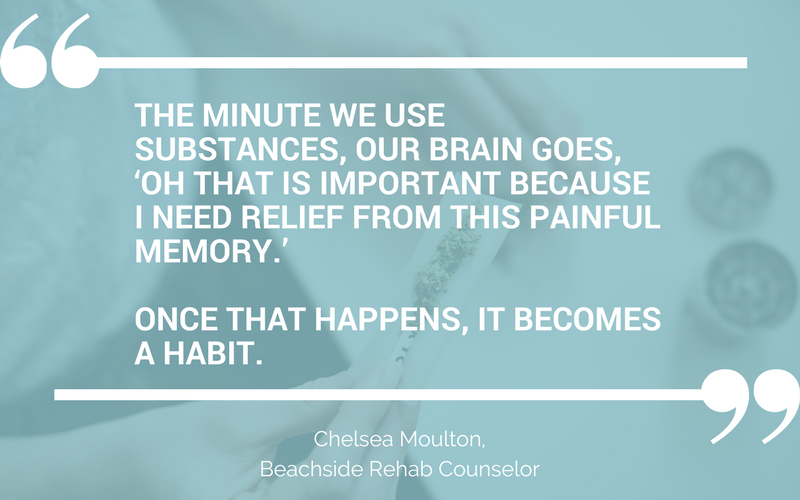Many of us know that trauma can dramatically affect the people’s lives. Phrases like Post-Traumatic Stress Disorder and “fight-or-flight” have become destigmatized and more common in our everyday language.
In many ways, it can be easy to forget the full spectrum of issues that trauma can cause. Indeed, it can be a catalyst or even an underlying cause for a litany of problems—ranging from high levels of cortisol (the hormone associated with stress) and adverse physical health issues to violent behaviors.
Childhood vs. Adult Trauma
The link between trauma and these issues has been known for quite some time. The Center for Disease Control and Kaiser Permanente conducted a study in 1998 that found nearly two-thirds of the participants had at least one Adverse Childhood Experience (ACE). As the numbers of ACEs went up, so did the risk for disease, mental health issues, substance abuse, and even early death.
The link between substance abuse and trauma is not just attributed to childhood traumatic events, however. Crises in adulthood, like rape or battlefield trauma, can prevent normal functioning and lead to barriers in life. Ultimately, this can lead to chronic health problems caused by toxic stress, which can trigger an individual’s desire to find sources of relief, like drugs or alcohol.
“People can have a predisposition to substance abuse, but may not have experienced a traumatic event in childhood they wish to escape from,” says Beachside Rehab Counselor, Chelsea Moulton. “Once they experience a traumatic event in adulthood, however, they are more likely than most to seek out substances for escape.”
Toxic Stress and the Brain
Toxic stress is a term that describes the kinds of experiences that modify brain architecture, typically because of trauma. Toxic stress occurs when the stress hormone, cortisol, is continually released to the point that the body reconfigures itself to adapt.
Eventually, toxic stress will cause the neuroreceptors in the brain to completely transform to deal with the release of extra hormones. In effect, this changes the brain’s chemistry and how it behaves towards adverse situations.
Once toxic stress has become the norm within the brain’s chemistry, an individual will then react to stress with an acute stress response, also known as “fight-or-flight.” These symptoms may have physical manifestations, such as sweaty palms or heart palpitations, or through outward maladaptive strategies, like violent outbursts or drug use.
Flight Response: Substance Abuse
One of the most common examples of the “flight” response is substance abuse. Substances like drugs or alcohol can act as a replacement for the deficient neuroreceptors that give the body the ability to cope with stress. After drugs or alcohol have been introduced into the body, they can quickly become a maladaptive strategy to grapple with the trauma. This is especially true if the individual lacks the resources to help manage the emotions related to flashbacks or stressors.
What might have been a one-time-use to deal with a stressful moment or to “escape” from reality, can quickly spiral into an addiction. Once addiction has set in, the need to be in “flight mode” regularly becomes a cycle in which the individual cannot live without the moments of reprieve.
“The limbic system, also known as the pleasure center of the brain, is what relates our habits to our need to survive,” says Moulton. “For instance, the limbic system causes us to drink water when we are thirsty because it has related water to the relief of thirst. The minute we use substances, our brain goes, ‘Oh that is important because I need relief from this painful memory.’ Once that happens, it becomes a habit. When we use substances, it becomes a priority, and we use it to survive.”
Addiction can then lead to other stressful and traumatic events, like job loss, healthcare problems, and loss of income. Aggravators like these complicate toxic stress as retraumatization becomes more likely, which can subsequently lead to further physical and mental health problems. In fact, reducing retraumatization can be a critical step in diminishing substance abuse. Thus, it becomes imperative that the initial trauma(s) are alleviated along with the substance abuse.
Getting Help
As trauma changes one’s response to adverse situations, substance abuse can be one of many issues that individuals face. Here at Beachside, we recognize that there can be a full spectrum of therapy needed to treat the trauma, not just the coping mechanisms.
Our process of treating trauma and substance abuse starts at intake, where we ask targeted questions to assess the history of trauma and its potential links to addiction. “If trauma is something you are self-medicating, we believe it is important to address it from the beginning,” says Moulton.
After intake, our clinicians at Beachside complete a trauma assessment at the beginning of therapy. Once we have completed the initial assessment, our team will then recommend a treatment plan to help you stabilize and move towards complete healing.
One type of therapy that is typically recommended for severe traumas is EDMR therapy, which stands for Eye Movement, Desensitization, and Reprocessing. Beachside has EMDR therapists onsite who are available to assist with processing severe trauma more rationally to start the healing process and reduce the risk of relapse.
However, we also recognize that trauma has no timeline for healing. Aftercare is one of the most important parts of the Beachside program. We evaluate needs and assist in making sure healing continues after treatment, whether that is through an extension of care, community programs for specific traumas, or group therapy sessions.
If you or a loved one have experienced trauma and need help with your alcohol or drug addiction, Beachside Rehab can help. Contact us at 866-349-1770 to get help today.



